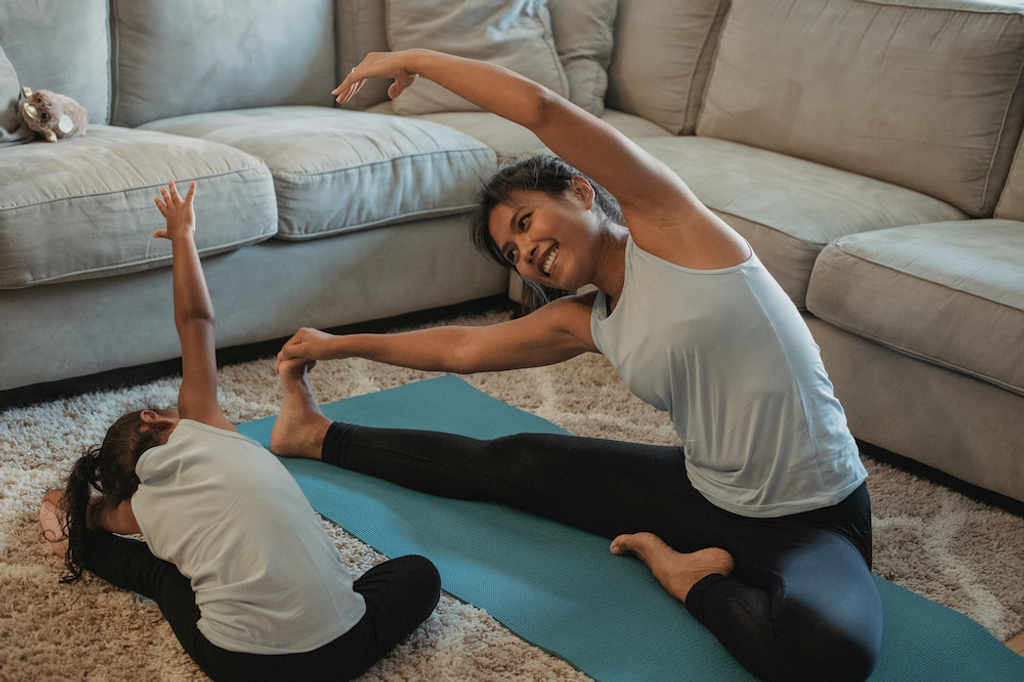The Professional Organizer’s Guide to Managing the Physical Demands of Your Job
Professional organizing may not have the reputation of being physically grueling, but anyone in the industry knows how intense the work can be. From lifting heavy boxes to hours of sorting on the floor, your body feels every minute of it. While the physical aspect of organizing can be energizing and even lead to unintentional weight loss, it’s important to address the toll it takes on your body to avoid long-term pain or injury.
In this guide, we’ll cover strategies to keep your body strong and resilient, why targeted exercise is essential (yes, even outside of your work), and how to implement a sustainable self-care routine that supports your physical health.
1. Why Your Work Isn’t Enough to Build Strength
It’s tempting to think that hours of hauling and sorting are “enough exercise.” After all, you’re lifting, squatting, and moving constantly! But the reality is that the repetitive motions and unbalanced physical demands of organizing can lead to overuse injuries, poor posture, and chronic pain.
- Uneven Workloads: Lifting heavy boxes or furniture often puts stress on one side of the body, especially if you favor a dominant hand. This can cause muscle imbalances over time.
- Limited Range of Motion: Most tasks involve bending, twisting, or kneeling—but rarely focus on balanced, full-body movement patterns.
- Core Weakness: Without a strong core, your back, hips, and shoulders often compensate, leading to strain and potential injury.
Adding targeted strength training to your routine can counteract these issues by building balanced muscle strength, improving posture, and protecting your joints from wear and tear.
2. Key Exercises for Professional Organizers
The good news? You don’t need to become a gym rat to see the benefits of strength training. Focus on a few foundational exercises that strengthen your core and stabilize your body for the physical demands of organizing.
Core Strengtheners
A strong core is your best defense against back pain and injury. These exercises are quick and can be done at home:
- Plank Holds: Build core stability with this simple exercise. Start with 20 seconds and work up to a minute.
- Bird Dogs: Strengthen your lower back and balance by extending opposite arms and legs while on all fours.
- Dead Bugs: Lie on your back and lower one leg and the opposite arm toward the ground while keeping your core engaged.
Upper and Lower Body Strength
These moves mimic the actions you perform daily, making them functional and relevant:
- Squats: Improve leg and glute strength for lifting and bending.
- Bent-Over Rows: Strengthen your back and shoulders to handle heavy lifting. Use dumbbells or resistance bands.
- Farmer’s Carry: Grab a pair of weights or heavy objects and walk with them to build grip strength and core stability.
3. Preventing Pain During Organizing Sessions
Preventative care during your workday can make a huge difference. Implement these strategies to reduce strain and stay comfortable:
- Alternate Positions: Avoid prolonged sitting or standing. Switch between kneeling, sitting, and standing to prevent stiffness.
- Use Proper Lifting Techniques: Bend at your knees, not your waist, and engage your core before lifting heavy items.
- Stretch Regularly: Take breaks to stretch tight muscles, especially your hamstrings, lower back, and shoulders.
- Use Supportive Gear: Invest in knee pads for floor sorting, anti-fatigue mats for standing, and gloves to reduce hand strain.
4. Why Rest and Recovery Matter
Recovery is just as important as the work you do to strengthen your body. Without proper rest, you increase your risk of burnout and injury.
Stretching and Mobility Work
Set aside 10-15 minutes at the end of your day to stretch and release tension. Foam rollers or massage balls can help loosen tight muscles.
Active Recovery
On lighter workdays, incorporate activities like yoga, swimming, or walking. These help keep your body moving without adding stress.
Sleep and Nutrition
Sleep is essential for muscle repair and overall energy. Combine it with a nutrient-dense diet rich in protein, healthy fats, and complex carbs to fuel your demanding days.
5. Mindset Shift: Think of Strength Training as a Tool, Not a Burden
It’s easy to see strength training as “just another thing” to add to your busy schedule. But reframing it as an investment in your career can help. By dedicating even 20 minutes, 2-3 times a week, to focused exercises, you’re giving your body the support it needs to thrive in the long term.
Instead of thinking of the gym as a chore, consider alternatives that fit your preferences:
- At-Home Workouts: Use resistance bands, bodyweight exercises, or online workout programs.
- Group Classes: Join a Pilates or yoga class to add variety and accountability.
- Outdoor Activities: Hiking, biking, or even playing sports can help build strength in a fun way.
Conclusion: Strengthen Your Body to Strengthen Your Business
Your body is one of your greatest tools as a professional organizer. By incorporating strength training, proper ergonomics, and recovery strategies into your routine, you’ll not only prevent pain and injury but also increase your endurance and longevity in the field.
Take the next step: Start with a 20-minute at-home workout or schedule a consultation with a personal trainer to create a customized program. Your future self (and your clients) will thank you!

About Tammy Cramer
Tammy is a small business owner and co-founder of Hedl.

